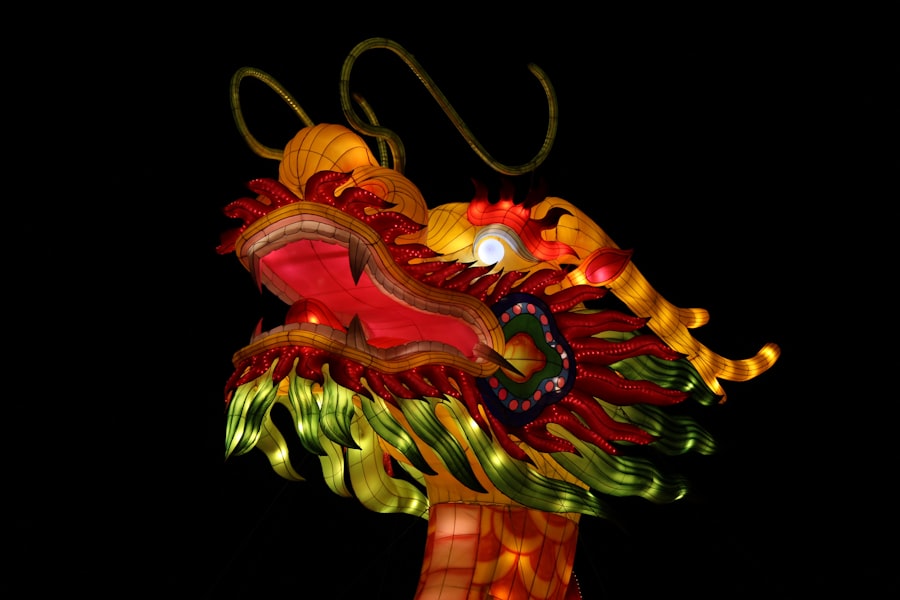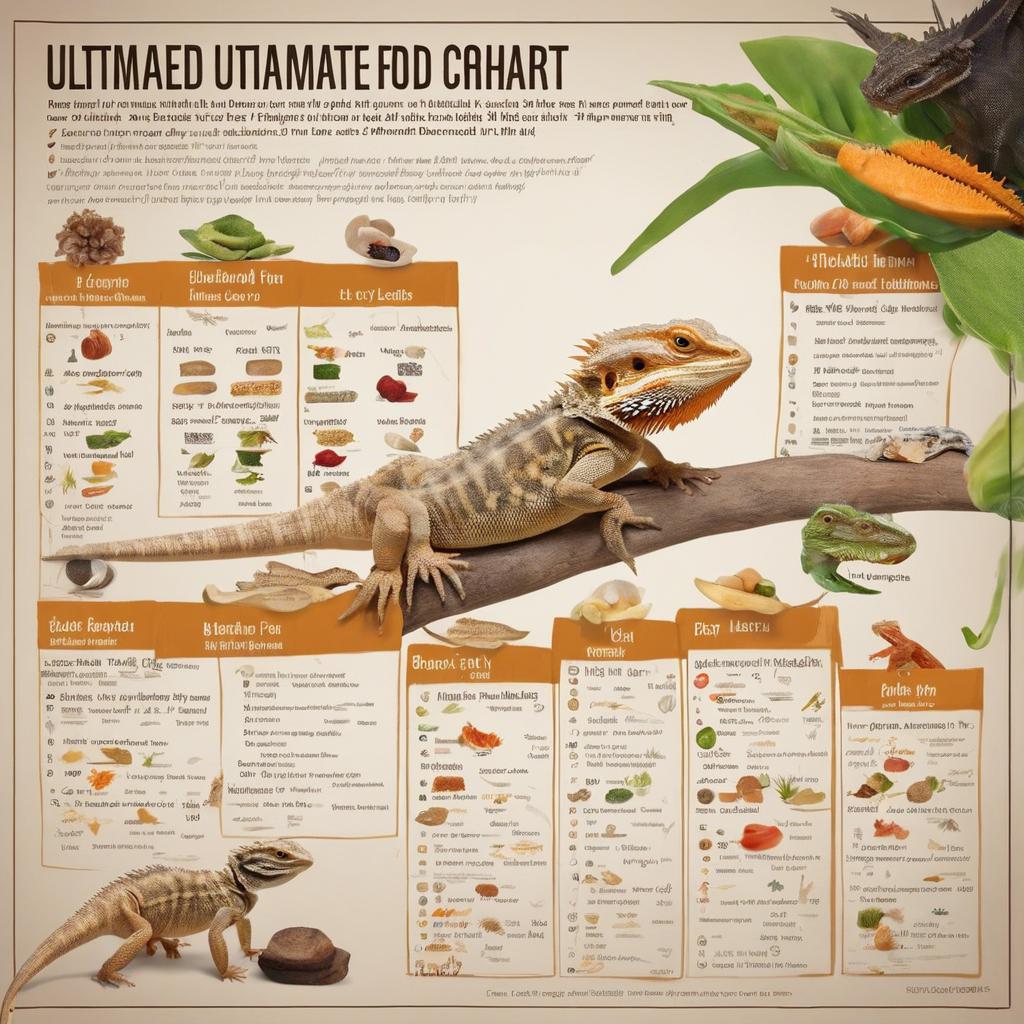Bearded dragons are popular reptile pets known for their unique appearance and docile nature. These fascinating creatures make great companions for reptile enthusiasts of all ages. However, it is important to understand that proper care and nutrition are essential for the health and well-being of these reptiles.
Bearded dragons require a specific diet and habitat to thrive. They are omnivores, meaning they eat both plant matter and insects. It is crucial to provide them with a balanced diet that meets their nutritional needs. In addition, creating a consistent daily routine for your bearded dragon can help them feel secure and reduce stress.
Key Takeaways
- Bearded dragons require a specific diet and daily routine to maintain their health.
- Understanding their nutritional needs is crucial to prevent health issues and deficiencies.
- Using a printable food chart can help keep track of their diet and ensure they are getting the right nutrients.
- Creating a food chart involves researching and selecting appropriate foods for your bearded dragon.
- Feeding your bearded dragon should be done with care and attention to prevent overfeeding or underfeeding.
Understanding Bearded Dragon Nutritional Needs
A healthy diet is crucial for the overall well-being of your bearded dragon. In the wild, they consume a variety of insects, such as crickets and mealworms, as well as leafy greens and vegetables. As a pet owner, it is important to replicate this diet in captivity.
Bearded dragons require a balance of protein, carbohydrates, vitamins, and minerals in their diet. Protein can be provided through insects like crickets, mealworms, and dubia roaches. Leafy greens such as collard greens, kale, and dandelion greens are excellent sources of vitamins and minerals. Vegetables like carrots, squash, and bell peppers can also be included in their diet.
It is important to note that the ratio of insects to plant matter changes as bearded dragons age. Younger dragons require more protein while adults should have a higher percentage of plant matter in their diet. Providing a varied diet will ensure that your bearded dragon receives all the necessary nutrients for optimal health.
Importance of Daily Routine
Establishing a daily routine for your bearded dragon is essential for their overall well-being. These reptiles thrive on consistency and predictability. A consistent routine helps them feel secure and reduces stress, which can lead to better health and behavior.
A daily routine for a bearded dragon typically includes feeding, hydration, and light exposure. Feeding should occur at the same time each day to establish a regular eating pattern. Providing fresh water in a shallow dish is important for hydration. Bearded dragons also require exposure to UVB light for proper calcium absorption and overall health. This can be achieved through the use of a UVB light bulb or by providing access to natural sunlight.
Benefits of Using a Printable Food Chart
Using a printable food chart can be a helpful tool in ensuring that your bearded dragon receives a balanced diet. A food chart allows you to keep track of the types and quantities of food your dragon consumes, making it easier to monitor their nutritional intake.
A food chart can also help you identify any patterns or deficiencies in your dragon's diet. By recording what they eat each day, you can ensure that they are receiving a variety of foods and meeting their nutritional needs. This can be especially useful if you notice any changes in their behavior or health.
How to Create a Bearded Dragon Food Chart
Creating a food chart for your bearded dragon is relatively simple and can be customized to fit your dragon's specific needs. Here is a step-by-step guide to creating a food chart:
1. Choose a format: Decide whether you want to create a physical chart using pen and paper or use a digital format such as a spreadsheet or online template.
2. Determine the categories: Divide your chart into categories such as insects, leafy greens, vegetables, and supplements.
3. Record daily intake: Each day, record the types and quantities of food your bearded dragon consumes in each category.
4. Monitor changes: Keep an eye on any changes in your dragon's behavior or health and make note of them on the chart.
5. Adjust as needed: Use the information on the chart to make adjustments to your dragon's diet as necessary. This may involve increasing or decreasing certain foods or adding supplements.
Tips for Feeding Your Bearded Dragon

Feeding your bearded dragon properly is essential for their health and well-being. Here are some best practices to keep in mind:
1. Offer a variety of foods: Bearded dragons thrive on a varied diet. Offer a mix of insects, leafy greens, and vegetables to ensure they receive a wide range of nutrients.
2. Gut-load insects: If you feed your dragon insects, it is important to gut-load them before offering them as food. Gut-loading involves feeding the insects a nutritious diet before feeding them to your dragon, ensuring that they pass on those nutrients.
3. Dust insects with calcium powder: Insects should be dusted with a calcium powder supplement before being offered to your dragon. This helps ensure they receive adequate calcium for bone health.
4. Avoid overfeeding: Bearded dragons have a tendency to overeat, which can lead to obesity and other health issues. Offer appropriate portion sizes based on your dragon's age and size.
5. Remove uneaten food: If your dragon does not eat all the food you offer, remove it from their enclosure to prevent spoilage and bacterial growth.
Common Health Issues in Bearded Dragons
While proper care and nutrition can help prevent many health issues in bearded dragons, it is important to be aware of common problems that can arise. Some common health issues include metabolic bone disease, respiratory infections, parasites, and impaction.
Metabolic bone disease occurs when a bearded dragon does not receive enough calcium or vitamin D3, leading to weak bones and deformities. Respiratory infections can occur if the dragon's enclosure is too cold or if they are exposed to drafts. Parasites such as mites and worms can also affect bearded dragons if they are not properly treated. Impaction can occur if a dragon ingests substrate or other foreign objects, leading to blockages in their digestive system.
Signs of Nutritional Deficiencies
Nutritional deficiencies can have serious consequences for bearded dragons. It is important to be able to recognize the signs of common deficiencies so that you can address them promptly. Some signs of nutritional deficiencies include:
1. Soft or deformed bones: This can indicate a lack of calcium or vitamin D3 in the diet.
2. Poor appetite: A lack of interest in food or a decreased appetite may indicate a nutritional deficiency.
3. Weight loss: If your dragon is losing weight despite eating regularly, it may be a sign of a nutritional deficiency.
4. Weakness or lethargy: A lack of energy or weakness can be a symptom of various nutritional deficiencies.
5. Skin problems: Dry, flaky skin or shedding issues can be a sign of inadequate nutrition.
How to Prevent Health Issues
Preventing health issues in bearded dragons starts with providing proper care and nutrition. Here are some tips to help keep your dragon healthy:
1. Provide a proper habitat: Ensure that your dragon's enclosure is the right size and temperature, with appropriate lighting and humidity levels.
2. Offer a balanced diet: Feed your dragon a varied diet that includes a mix of insects, leafy greens, and vegetables.
3. Provide UVB light: Bearded dragons require UVB light for proper calcium absorption. Make sure they have access to this type of light for a few hours each day.
4. Keep the enclosure clean: Regularly clean and disinfect your dragon's enclosure to prevent the growth of bacteria and parasites.
5. Schedule regular vet check-ups: Regular veterinary check-ups are important for monitoring your dragon's health and catching any potential issues early on.
Maintaining a Healthy Bearded Dragon with a Daily Routine and Food Chart
In conclusion, proper care and nutrition are essential for the health and well-being of bearded dragons. Establishing a consistent daily routine and using a food chart can help ensure that your dragon receives a balanced diet and the necessary nutrients.
By providing a varied diet, monitoring their intake, and addressing any nutritional deficiencies promptly, you can help prevent common health issues in bearded dragons. Regular vet check-ups are also important for monitoring their overall health and catching any potential issues early on.
Remember, prioritizing proper care and nutrition is key to maintaining a healthy and happy bearded dragon. With the right diet, routine, and attention to their needs, these fascinating reptiles can thrive in captivity.
If you're looking for more information on bearded dragon care and nutrition, you might find our article on “Can Bearded Dragons Eat Black Beans?” interesting. This article explores the dietary options for bearded dragons and provides insights into whether black beans can be included in their daily routine. To ensure your bearded dragon's health and well-being, it's essential to have a printable food chart handy. Check out our comprehensive guide on “Bearded Dragon Orange Around Eyes” to learn more about this common health issue and how to address it. For more reptile-related articles and resources, please visit our website's Terms and Conditions page.
FAQs
What is a bearded dragon?
A bearded dragon is a type of lizard that is commonly kept as a pet. They are native to Australia and are known for their distinctive beard-like appearance.
Why is a daily routine important for bearded dragons?
A daily routine is important for bearded dragons because it helps them maintain a healthy and balanced lifestyle. This includes regular feeding, hydration, and exercise.
What is a printable bearded dragon food chart?
A printable bearded dragon food chart is a document that outlines the recommended diet for bearded dragons. It includes information on the types of food they should eat, how much they should eat, and how often they should be fed.
What types of food should bearded dragons eat?
Bearded dragons should eat a variety of foods, including insects, vegetables, and fruits. Some common foods include crickets, mealworms, kale, collard greens, and strawberries.
How often should bearded dragons be fed?
Bearded dragons should be fed once or twice a day, depending on their age and size. Younger dragons may need to be fed more frequently, while older dragons may only need to be fed once a day.
What are the benefits of using a printable bearded dragon food chart?
Using a printable bearded dragon food chart can help ensure that your pet is getting the proper nutrition they need to stay healthy. It can also help you keep track of what foods you have fed your dragon and when, making it easier to maintain a consistent feeding schedule.

